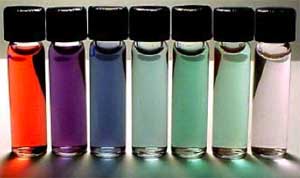Controversial HIV test replicated, but we still don’t know how it works
Ars Technica » Scientific Method 2014-07-03
One of the keys to the treatment of disease is early and cheap detection. This is especially true for diseases that disproportionately affect developing nations, where high technology detection methods are often not affordable or even available. Cheap, sensitive, and simple detection kits for serious diseases could make a huge impact on health outcomes in the developing world.
Accordingly, I was very excited when a new protocol for detecting HIV was published in 2012. Diagnosis would be quick, relatively cheap, and involve observing a simple change of color. Even better, the sensitivity, even when tested on serum from infected users, was better than existing tests. It all sounded fantastic.
Fast forward six months, and things weren't so rosy. There seemed to be a lot of problems with the work, and people pointed these out to the people who developed the test. There are two ways these researchers could respond to this criticism: ignore it or refute it. Refuting it is, thankfully, the path being followed. But, the latest study still leaves some large holes to be filled.
Read 22 remaining paragraphs | Comments
